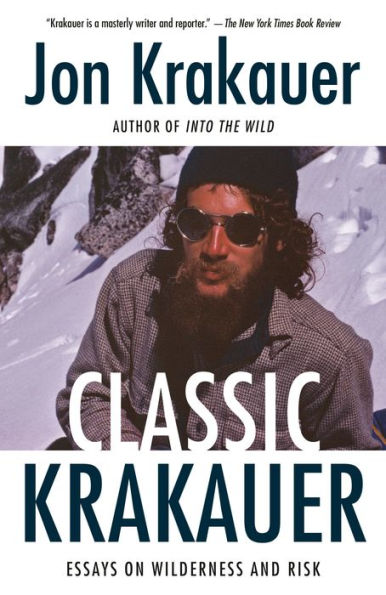Read an Excerpt
Chapter 1
Mark Foo’s Last Ride
Published in Outside, May 1995
Twenty-two miles down Highway 1 from San Francisco, a craggy fist of land called Pillar Point thrusts emphatically into the cold Pacific. Friday, December 23, 1994, dawned fair over this stretch of coast. Mountainous waves crashed against the headlands, spraying up billows of mist that unfurled languidly across the beaches. Beyond the end of the point, some fifteen surfers bobbed in the winter sunlight, scanning the horizon for approaching swells.
It was not uncommon to see surfers off the point—a spot they called Mavericks—dressed in heavy, hooded wetsuits and sitting astride oversize boards. But the hovering helicopter, the three boats of photographers just outside the surf line, and the throng of spectators lining the cliffs suggested this was no ordinary surf session.
For more than a week, the largest, most perfectly shaped waves in a decade had been thundering over the reef at the end of Pillar Point. Word traveled quickly over the international surfers’ grapevine: Mavericks, which had recently emerged as one of the world’s heaviest waves, was going off. Upon hearing the news, a trio of renowned big-wave surfers from the Hawaiian Islands—Brock Little, Ken Bradshaw, and Mark Foo—hurried to California to join the local crew in the surf.
The names and faces of the three Hawaiians were familiar to most of the five million surfers on the planet. Who among them was top dog in the surf was a matter of lively debate, but there was no disagreement over who cut the highest profile out of the water.
Mark Sheldon Foo was not afflicted with an excess of modesty or self-doubt. In his résumé, he unabashedly described himself as “surfing’s consummate living legend.” Detractors called him grandiose, and worse, but it didn’t crimp Foo’s style. In his Filofax were the phone numbers of surfing’s premier photographers, whom he cultivated and kept in close contact with. His picture appeared in print with uncanny frequency, and he hosted a surfing show on cable television.
Foo made no bones about his thirst for fame or his strategy for achieving it: ride the world’s biggest waves with singular audacity and do it when the cameras were rolling. That Friday morning, cameras were present in abundance to document the historic convergence of Foo and his celebrated colleagues on Mavericks. It promised to be a momentous coming out for an underappreciated California wave.
Despite its proximity to San Francisco and Santa Cruz, as recently as 1990, only a handful of locals had ever heard of Mavericks, and only one brave soul—a townie named Jeff Clark—had actually surfed it. By and by, rumors started to drift up the coast about a mysto surf break near Half Moon Bay that generated thick, grinding barrels tall enough to drive a bus through. They were reputed to be at least as big as—and considerably more hollow than—the famous waves that rumbled ashore at Hawaii’s Waimea Bay, the Mount Everest of surfing. Mavericks, moreover, gave off a vibe that made Waimea’s daunting aura seem benign by comparison. A 1992 article by Ben Marcus in Surfer magazine described Mavericks as “gloomy, isolated, inherently evil. The reef is surrounded by deep water, and lies naked to every nasty thing above and below the Pacific: Aleutian swells, northwest winds, southeast storms, frigid currents, aggro elephant seals and wilder things that snack on aggro elephant seals.” Taped to the wall of a bait shop at Pillar Point Harbor is a faded newspaper clipping about a local fisherman who pulled three great white sharks from the surrounding waters in a single day.
Initially, as luck would have it, the waves that Friday morning failed to live up to the inflated expectations of the visiting surfers and assembled media. As they paddled out to the lineup, none of the Waimea veterans was especially impressed or intimidated by what he saw. The epic surf of the preceding week had diminished somewhat. The crowds in the water and on the cliffs provided an uncharacteristic sense of security. “It was a little anticlimactic,” Bradshaw confirms. “A few big sets came through, but nothing really huge. Everybody was just out there having fun.”
Shortly before noon, however, Mavericks showed its true face. Somebody in the gallery on the cliffs yelled, “Set!” A procession of telltale black lines was rushing toward the point at 22 knots. Half a mile offshore, Bradshaw saw the approaching swells and maneuvered into position.
He let the first wave of the set roll under him, then started paddling in earnest for the next one. As the swell charged out of deep water and rushed over the reef, it humped up to the dimensions of a drive-in movie screen, seemed to pause for a beat to marshal its power, and began to topple forward. Digging hard down the surging face, Bradshaw noticed Foo—his friend, his longtime antagonist—several yards ahead and slightly to the right, scrambling for the same wave.
According to the unwritten rules of surfing, the wave belonged to Bradshaw, because he was “deeper”—that is, he was positioned closer to its peak, the part of the wave that would momentarily pitch shoreward and slam down. “But I was maybe a little too deep,” Bradshaw reflects, “and I could see that Mark was already committed, so I decided to back out and let him have it.” Pulling up abruptly, Bradshaw plunged his legs to either side of his board and jammed on the brakes. The wave bucked to full height and then slid out from under him. Perched for a moment on the tottering, feathering crest, he caught a glimpse of Foo stroking powerfully down the face, ready to leap to his feet, in perfect position to make the wave. The motor drives of more than a dozen cameras, all trained at Foo, began to grind. It was the last time Bradshaw would see Foo alive.



